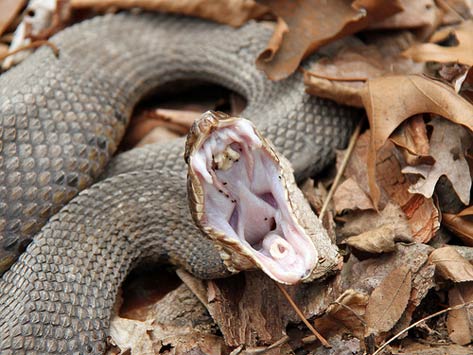

By Yahaira Cespedes
Allergy sufferers dread spring, because to them spring means itchy eyes and runny noses from hay fever and pollen -- the dreaded spring allergies. This is especially true for people who suffer from heightened allergic reactions due to asthma. In addition, recent studies have indicated that people suffering from hay fever may have worse allergic reactions if there are dogs in their environment. If you’re an allergy sufferer but want to adopt a pet, what choices do you have?
Actually, many pet choices exist for people who suffer from allergies ranging from the traditional domestic pet (like a dog or cat) to exotics including reptiles and aquatic animals. Some domestic animals produce fewer allergens than others, categorizing them as “hypoallergenic,” or less prone to cause an allergic reaction.
As allergy sufferers know, the most common pet allergy is to pet dander. For this reason, a lot of people may think that longhaired animals equal more dander in the home. This is not necessarily the case, because all warm-blooded animals produce dander, even birds.
People allergic to cats might also react to a protein found in feline saliva called FELD1. Recent developments in science have had promising results in finding a "cat allergy cure." In March, the Journal of Allergy and Clinical Immunology reported a vaccine had been developed, which showed no serious side effects and had reduced the skin’s inflammatory reaction by 40 percent with one single injection. This vaccine is still in the testing phase.
If you already have a pet dog in your home and suffer from spring allergies, you probably have a HEPA air filter and take antihistamines to reduce itchy, watery eyes and a stuffy nose.
It is important to note that there is no 100 percent hypoallergenic pet. Also, the term “hypoallergenic” means less allergens, and is not synonymous with non-allergic. No animal is completely non-allergic, just some have a lower incidence of causing allergies than others.
Whether you already have a pet in the home or want to get one, this article will explore how to select a hypoallergenic pet, how to reduce allergens in the home, and options available as an additional strategy to combat pet allergies.
petMD has provided the following comprehensive lists to check out, whether you’re searching for the right dog, cat, or starter bird to introduce into your home. Also, there are other, more exotic options available for adoption that you may have not considered!
petMD does not endorse one breed of pet over another, and the purpose of introducing this list of more hypoallergenic pets should serve as an overall recommendation guide only. Remember, there is no such thing as a 100 percent hypoallergenic pet! That being said, below are a few lists of potential pets that may suit you — just click the list you want to go to that page:
If you’re an allergy sufferer, then you may already know that having a HEPA air filter greatly reduces the amount of impurities present inside the home. To minimize allergens, it is also important to keep your indoor environment clean. Continually wipe down hard surfaces and groom your pet often. Vacuuming (especially for homes with carpets) with a HEPA vacuum filter will greatly reduce the presence of pet dander.
If you suffer from mild allergies, you also have the option of taking allergy shots and using antihistamines to reduce the severity of allergy symptoms brought on by the presence of a pet in your home. Also, the level of allergens inside the home is relative to the size of the domicile and how often you let your pet out. If you have a dog, for example, just letting it run outside reduces the amount of dander present inside the home.
The best start to finding your perfect pet is simply to walk through a pet store or animal shelter and just try asking about the animals that you’re most drawn to. Keep petMD’s lists of hypoallergenic cats, birds, and dogs handy to check if any within that category are available for adoption.
Animal shelters usually provide an adjustment time period clause for you to become acclimated with the new addition to your family. If, after you bring your pet home, your allergies become an intolerable issue and nothing works, you always have the option of returning the animal back to the shelter.
Science continues to make advances in treating allergy sufferers who are animal lovers. Soon, a vaccine may become widely available that “cures” people from cat allergies. Antihistamines and air filters can also provide relief from allergy symptoms, just as walking and exercising your dog outside will reduce pet dander in the home. But, if you don’t have a pet yet and want to adopt one, consider adopting a hypoallergenic pet and see if that doesn’t provide it’s own cure!
 Pet Food Ingredients & Nutrients: Dogs are What They Eat
By Lorie Huston, DVM
Feeding a high quality diet
Pet Food Ingredients & Nutrients: Dogs are What They Eat
By Lorie Huston, DVM
Feeding a high quality diet
 Enzyme Replacement Therapy for EPI
Exocrine pancreatic insufficiency (EPI) is
Enzyme Replacement Therapy for EPI
Exocrine pancreatic insufficiency (EPI) is
 Choosing the Best Dog Food
By T. J. Dunn, Jr., DVM
"What is the best foo
Choosing the Best Dog Food
By T. J. Dunn, Jr., DVM
"What is the best foo
 Snake Bites And Dogs
Venomous Snakes and Dogs
By T.J. Dunn, Jr.
Snake Bites And Dogs
Venomous Snakes and Dogs
By T.J. Dunn, Jr.
 You, Your Dog, and a Flying Disc
Some dogs are just born to fly. You see them at the park,
You, Your Dog, and a Flying Disc
Some dogs are just born to fly. You see them at the park,
Copyright © 2005-2016 Pet Information All Rights Reserved
Contact us: www162date@outlook.com